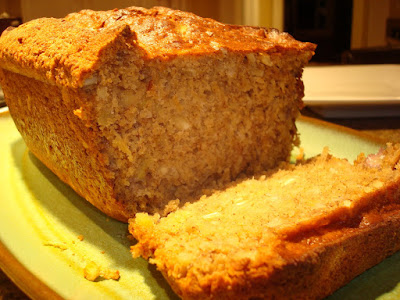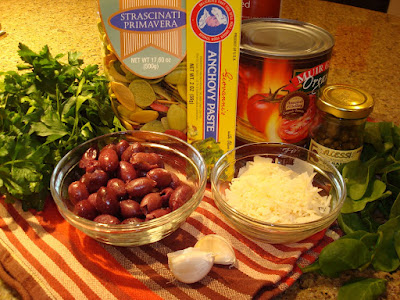Thank you for submitting questions to be addressed in this post. I'll do my best to answer them thoroughly!
Questions- Should I buy salted or unsalted butter?
Answer- I always prefer unsalted butter for two reasons.
1. Salt is a preservative. People were using salt to preserve food, long before refrigeration was invented. When salt is added to butter, there is no need for the manufacturer to hurry it off to the store. Therefore, they don't. Salted butter is much more likely to sit around in the factory's refrigerated storage before it gets to you. Unsalted butter is always fresher...because it has to be.
2. You have so much more control over the amount of sodium in your food, when
you put it in yourself! I love salty foods, but I'd much rather add natural salts with less sodium. That leads to question number two.
Question- What's the different between table salt, kosher salt, and sea salt? Do I really have to buy so many types of salt?
Answer- Table salt is the most refined and processed. It also has added anti-caking agents, iodine, and preservatives (from the answer above, does salt
need preservatives???) Kosher salt is minimally processed and has no added preservatives. It is a larger grained salt, so its easier to pinch in your fingers. Sea salts are the largest grained salt, and often are irregularly shaped and slightly colored. Many of them have not been processed at all. Meaning, sea salt is the healthiest choice. The down side, high quality sea salts can be a little pricey. If you have sensitive taste buds you might notice the absence of the "chemically" flavor in kosher and sea salts. They possess more of a natural or
briny note. I use kosher salt for baking and general cooking. I use sea salt for finishing dishes, sprinkling on baked items, and for dressings--places where the mild flavor difference isn't going to go unnoticed.
Question- What's so important about kitchen knives?
 Answer-
Answer- EVERYTHING! Your knives should be your #1 kitchen tool. (Followed by a good cutting board to keep them sharp!) You get more use out of a good knife, than any other kitchen utensil or gadget. Therefore, you should invest in well-made knives and take special care of them. Choosing a good chef's knife can be tricky. Cutlery companies address the steel and ergonomics in different ways. The two most important things to consider: the knife should be made from one piece of steal, running from the tip all the way through the handle, and the knife should be comfortable to hold. There are two common varieties of chef's knives to inspect.

1. The classic french chef's knife is long with a curved blade, to allow a rocking motion when slicing.
2. The Santoku, or Japanese chef's knife, has a straighter edge along the blade, but tends to be a lighter weight knife.
The best way to decide which kind you like is to try them out. Some kitchen stores will allow you to handle the display knives. An even better place to try them out is at a friend's house. If you have a friend with both types, offer to go over and help make dinner. By the end of the night, you'll know which one you like best! Good knives will last forever, so buy the best you can afford. It's better to spend $100 on
one reliable and comfortable chef's knife, than to have a butcher's block full of cheap, flemsy knives that dull easily.
Caring for knives. Knives need to be hand washed and dried to stay sharp. Using a steel to sharpen your knives is a good idea too, but over time even this will not keep the blade as sharp as it should be. I recommend taking your knives to a professional sharpener about once a year. Oh yes, they're out there--blade sharpening shops--just waiting to breath new life into your sad little knives. This keeps your knives in the best possible shape--for a small amount of money!
Question- How do you season a cast iron skillet?
Answer- The best way I have found, is to rub the interior of the skillet with shortening, then to bake it up-side-down on 350*, for about an hour. The right amount of shortening will absorb up into the iron and the rest will drip off. I place a cookie sheet on the rack below to catch any drippings. Seasoning is important, because it protects the cast iron from rusting and creates that famous, natural, non-stick surface. I LOVE iron skillets! They are fairly inexpensive and are heavy-bottomed to provide even heating. They can be used on the stove, in the oven and on the grill! If you are buying one for the first time, I suggest going BIG. If you start with a small skillet, you'll just end up going back to get another one!
Caring for cast iron. As mentioned above, the seasoning is important. This should be done when you first bring your skillet home. If you ever burn something in the skillet and have to scrub it with steal wool, you'll have to re-season. You must always hand wash an iron skillet. Wash it with warm water and just a touch of dish soap. Purists would say
never to use soap on your iron skillet, but I just can't seem to help myself! Dry it thoroughly and add 1-2 drops of oil to it. Rub in the oil with a paper towel. If you do this everytime you use your skillet, you'll keep it well seasoned.
Question- You mentioned making your own stock in the "Waste Not" post. When I boil chicken breasts, is the leftover water stock?
Answer- It
wants to be stock, but it's just not quite there. What you have is a very watery, tasteless broth. The bones are important when making good stock. They release so much flavor into the water. I buy a rottiserie chicken almost every week. I bone the chicken, then use the shredded meat in salads, sandwiches, wraps, quesadillas, enchiladas... I then take the bones, and skin and throw them in a large pot with a couple big pinches of salt, a couple shakes of tumeric (enhances the color) and whatever scrap veggies I find in the bottom of the refrigerator drawer. Usually this includes a piece of unused onion I've put in a baggie, or the white stubs from a bunch of scallions, the root end of a head of celery stalks, or the last carrot in the bag--you get the idea. Fill the pot with water and simmer for an hour. Allow the stock to cool, strain and pour into quart-sized zip bags, then freeeze. As mentioned in the post last month, I can easily make 3-4 quarts of high quality stock, out of scraps, when I used to pay $4 for one quart. You can also keep some in a plastic container in the fridge for those times you just need 1/2 cup or so, for sauces. If you want to make stock out of the boiled chicken water, I suggest loading the pot with veggies. You'll end up with more of a veggie stock than a chicken stock--but still a great base for cooking!
Question- What is your favorite cookbook?
 Answer-
Answer- I am a huge
Ina Garten fan, and have several of her "Barefoot Contessa" cookbooks. Her recipes are elegant, simple and comforting--just my style. I use her recipes "as is", and also mutate her recipes frequently, making adjustments to my family's preferences. But, my
all time favorite cookbook is the Cook's Illustrated,
THE BEST RECIPES cookbook. It's enormous, with no photos and very few illustrations. So why is it my favorite? Because it is
exactly what is says it is; a book of the very best fool-proof recipes. Cook's Illustrated pulled together a large team of chefs to test, and retest every recipe until the team unanimously decided they had come up with the best product. Then they went into great detail to explain their processes and decisions. I have never been let down by any of THE BEST RECIPES recipes. And what's more, I come away with not only a great recipe, but with background knowledge. It's a cookbook and a cooking course rolled into one! Secretly, I've been known to keep it on my nightstand for bedtime reading. Don't tell!
Question- Explain the various cooking methods for eggs.
Answer-
Scrambled- Eggs that are whisked to combine the yolk and white (usually with a splash of milk) and fried in a skillet over medium-low heat.
Fried- Cracked over the skillet, then fried, flipping over once so both sides are cooked. The yolk and white should stay separated. Fried eggs can be prepared soft-fried (runny yolk) or hard-fried.
Sunny-Side Up- Cracked over a skillet and fried on only one side, so the yolk remains very runny.
Poached- Eggs cooked in liquid so they remain very moist. Generally this is done by cracking the egg over a pan of hot, (but not boiling) shallow water and cooked to the desired consistency. You can poach eggs in other liquids, so the egg will absorb the flavor of that particular liquid.
Hard and Soft Boiled- The eggs are placed, in their shells, in a pot of cold water. Turn the stove to high heat and bring the water to a boil. Boil for 10-12 minutes for
soft-boiled and 15+ minutes for
hard-boiled. Place the pot in the sink and allow cold water to run into the hot water, until the water in the pot is cool. Remove the eggs.
Question- Explain the difference in beef temperatures.
Answer-
 Rare
Rare has a cold red center and is soft to the touch, temperature 120-125*.
Medium-rare has a warm red center and is slightly more firm, temperature 130-135*.
Medium is pink and firm, temperature 140-145*.
Medium-well has a very small amount of pink in the center, temperature 150-155*.
Well done is brown throughout, temperature 160* and above.
REMEMBER, the less you cook your beef the juicer it is, AND the more
healthy is it. Just like veggies, the more you cook them, the more vitamins and minerals you kill. At my house, we like our beef to be medium-rare.
Question- I bought a block of Greek Style Feta Cheese because it was cheaper than the crumbled feta. It's texture is rubbery and doesn't have any flavor. What can I do with it?
Answer- Hmmm...If you're sure it's not bad, and can't bare the thought of throwing it out, here are two options.
1. Try soaking it in olive oil to soften the texture. It may take a couple days before you notice a change. You could also throw in some fresh rosemary stems to enhance the flavor.
2. Below is a recipe for a wonderful feta spread--maybe the other ingredients will mask the fact that your feta is faulty! I had the opportunity a couple years ago to go to South Beach, FL for the Food and Wine Festival. Many local restaurants were there giving out samples and recipes. This recipe came from a Greek restaurant in Miami. I can't remember it's name to give credit, but the spread is awesome!
Spicy Feta Spread
Ingredients:
1 large red pepper, roasted
1 lb. crumbled feta, room temp.
½ lb. ricotta
2 cloves garlic, chopped
½ cup olive oil
Juice of one lemon
1 Tb. fresh thyme
2 Tb. fresh oregano, chopped
Black Pepper to taste
Pita bread, cut into wedges
Hold the red pepper with tongs and roast over a stove burner until all sides are black. (This can also be done under the broiler, or on the grill.) Place the pepper in a paper or plastic bag for 15 minutes to steam, then remove the charred skin. Cut in half and remove the seeds and membrane. Chop the pepper and set aside. Using a food processor, pulse all the other ingredients together until smooth. Put the mixture into a bowl. Fold in the red pepper and chill for 2-3 hours. To serve, drizzle another tablespoon of olive oil on top and sere with pita wedges.
*You could buy a jar of roasted red peppers, but roasting one yourself is pretty easy and it definitely tastes fresher!
Serves 8-10.



























































